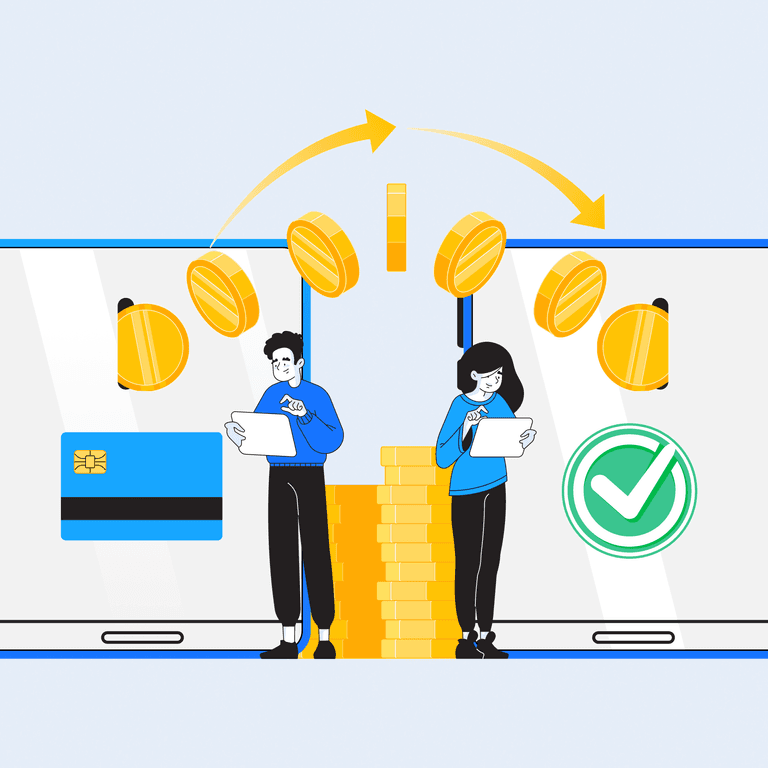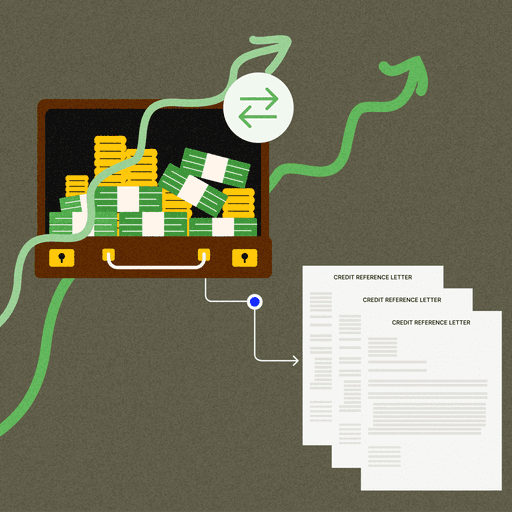
How Cloud-Based, Collaborative AR Gets You Paid Faster
- 6 min read
Invoice disputes are a primary cause of late payments. But with a more collaborative approach to accounts receivable, your AR staff can resolve disputes and get paid much faster.
We explain how cloud-based, collaborative AR helps you collect receivables in record time.

Late payments—and the impending dread of having to collect from slow or non-paying customers—are two of the greatest trials of being an accounts receivable (AR) professional. And unfortunately, these hurdles can undermine businesses’ cash flow and receivables turnover.
In 2021, an average of 50% of all B2B invoices issued in the US were paid late. Eight percent of invoices over 90 days past due were written off by these businesses. With such a high volume of overdue payments, AR professionals spend considerable time and labor pursuing collections. On top of this, late payments make it difficult for businesses to accurately forecast working capital availability.
For businesses wanting to collect receivables faster, it’s in their best interest to move away from traditionally tedious collections methods in favor of automation and collaborative AR practices.
In this blog, you’ll learn:
- The leading causes of late payments
- How traditional collections practices lead to what’s known as the AR disconnect
- What collaborative accounts receivable is
- How to streamline invoice disputes and collect receivables faster
What causes late payments?
First, it’s helpful to understand what contributes to late payments. By identifying the primary culprit, you can take action and right the ship. According to a recent study, 55% of accounts receivable professionals say managing disputes is their most difficult task. A whopping 99% confirmed that disputes contribute to late payments.
But what contributes to disputes? Customers might initiate a dispute if:
- They aren’t satisfied with the products or services you’ve provided them with
- The goods you’ve charged them for don’t align with the number of items they’ve received
- Sales teams promised customers discounts and haven’t communicated these price changes to your accounting department
Regardless of the cause, your customers will inevitably—at one point or another—dispute their invoices.
And when this happens, your customers will likely make a partial payment or decide not to pay at all. Your AR team is then left to manually investigate and resolve the issue when balancing your books.
The AR disconnect
Many businesses’ current processes for managing billing and payments are manual and prone to errors, leading to an influx in customer disputes.
Traditional collections tactics that revolve around email and phone communications are also clumsy, difficult to audit, and time-consuming. This leads to the AR disconnect—the communication gap that arises between AR departments and their customers.
With a lack of integrated tools between B2B buyers and suppliers, both parties have a hard time knowing which payments are outstanding and why. But, the B2B payment experience doesn’t have to look this way for long.
What is collaborative accounts receivable?
Collaborative accounts receivable is the idea that AR teams can and should work closely with customers and other departments in their organization throughout the invoice and payment lifecycle.
The way this happens is through a cloud-based platform that combines powerful invoicing, collections, and payments automation with collaboration tools.
By bringing all your communications with customers into a single online experience, you can save your AR team the pain of reaching out through disparate channels and more reliably track the status of all your receivables.
How to streamline dispute management in accounts receivable
Collaborative AR can prevent disputes by addressing their root causes: errors arising from miscommunications and manual processes.
A cloud-based collaborative AR platform allows you to:
1. Centralize documents and customer payment history in one place
AR automation platforms that give both suppliers and buyers a real-time view into the status of receivables significantly reduce the confusion that so often leads to disputes and payment delays.
Storing all invoices, related documents, and payment history in one place helps keep your collectors and customers aware of which payments have been made and which ones are still outstanding. Make sure to select a solution that integrates directly with your enterprise resource planning (ERP) system so that you don’t have to spend time duplicating information (as your invoices and customer accounts get populated automatically).
2. Create a direct communication channel between you and your customers
Following up on late payments and clearing up any customer concerns is much easier when you don’t have to get on the phone or hope your email gets read. When dealing with hundreds of unpaid invoices, these methods of getting in touch with customers certainly don’t scale well.
Consider the following use case. Your customer has just received an invoice containing several line items. After carefully reviewing their order, they come to the realization that Line Item 3 was never delivered. As a result, they decide to open a dispute.
With a collaborative AR tool like Versapay, customers can raise an issue with you directly on their invoice. This provides you with all the context you need to resolve it right away. You can then easily loop in other team members—even outside of finance—to get an answer quickly.
In a manner of clicks, you’ve notified everyone who needs to be aware of an issue. By embracing collaborative, cloud-based tools, you empower customers to open disputes immediately, attach documentation to support their claims, and involve other team members—all in one place.
3. Build customer relationships, not break them
The way your customers interact with your finance and accounting teams impacts not only their experience, but also how they’ll perceive your entire organization.
Tools that allow your AR team to communicate and collaborate with customers over the cloud can make collections feel a lot less adversarial. By making customer experience a priority throughout the billing and payment cycle, you’ll preserve positive customer sentiment and influence retention. And the easier you are to connect with to resolve billing issues, the faster you’ll get paid.
More finance leaders appear to be experiencing this shift in mindset: CFOs are coming to view payments not just as back-office matters, but as crucial components of customer relationships.
Our recent research surveying 400 CFOs found that respondents’ top reason for digitizing their accounts receivable and accounts payable processes (cited by 95.6%) was to benefit their customers and vendors.
Collaborative AR puts an end to late payments
Tedious collection calls and manual touch points no longer need to define your teams. No more voicemails and buried email threads. That’s the promise of a collaborative approach to accounts receivable.
Want to put an end to disputes that contribute to late payments? Get in touch with one of our experts here to learn how you can give your collectors and customers the tools they need to solve issues and make payments lightning-fast.
This blog was originally published in May 2021 and has been updated for accuracy and comprehensiveness.
About the author

Jordan Zenko
Jordan Zenko is the Senior Content Marketing Manager at Versapay. A self-proclaimed storyteller, he authors in-depth content that educates and inspires accounts receivable and finance professionals on ways to transform their businesses. Jordan's leap to fintech comes after 5 years in business intelligence and data analytics.


